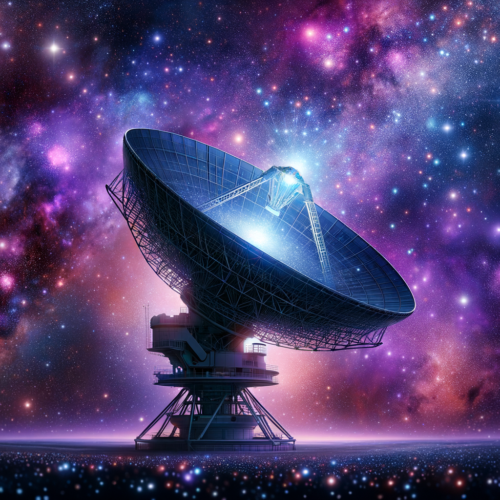A Cosmic Light Show: Severe Geomagnetic Storm to Illuminate Earth’s Skies
- A severe geomagnetic storm, caused by solar flares and eruptions on the sun, is predicted to hit Earth on Friday night, potentially offering “spectacular displays of aurora” as far south as Alabama and northern California.
- The National Oceanic and Atmospheric Administration’s Space Weather Prediction Center has issued a severe geomagnetic storm watch—the first in nearly two decades—due to a large cluster of sunspots causing several moderate to strong solar flares aimed at Earth.
- Coronal mass ejections, explosive bursts of plasma and magnetic fields from the sun’s corona, are expected to cause these geomagnetic storms, impacting Earth’s communications, power grids, navigation, and satellite operations.
Heads Up, Earthlings: A Spectacular Celestial Phenomenon Awaits
Prepare yourselves, dear inhabitants of Earth, for a cosmic spectacle seldom seen in these parts of the galaxy. A severe geomagnetic storm, courtesy of our ever-dynamic sun, is set to visit our planetary doorstep this Friday night. With it comes the promise of auroras—those ethereal waves of color that dance across the sky—visible from locations typically unacquainted with such celestial displays. Imagine witnessing the night sky ablaze with hues of green and pink as far south as Alabama and northern California.
Solar Shenanigans: A Storm Brews
Our sun, the star at the center of our solar system, has been quite the busy celestial body. A series of solar flares and eruptions emanating from a particularly active cluster of sunspots is the cause of this anticipated geomagnetic storm. These sunspots, areas on the sun’s surface that are cooler and darker than their surroundings, have been the source of several moderate to strong solar flares since Wednesday.
The Science of Solar Storms
For those unacquainted with the term, coronal mass ejections are essentially solar sneezes—explosive releases of plasma and magnetic fields into space. When Earth finds itself in the path of these cosmic expulsions, we experience geomagnetic storms. These storms are rated on a scale from G1 to G5, with G5 being the most severe. The upcoming storm is predicted to reach G4 levels, making it a potent force capable of causing significant disruptions to our planet’s technological infrastructure.
As a precaution, the guardians of our digital world have been alerted to take protective measures against potential disruptions to communications, power grids, and satellite operations.
Anticipation and Preparation: Earth Braces for Impact
This is an event the likes of which we haven’t seen in nearly two decades. The Space Weather Prediction Center, a beacon of knowledge in the vast ocean of space weather forecasting, has not issued a severe geomagnetic storm watch of this magnitude since the early 2000s. Shawn Dahl, a service coordinator at the center, expressed both excitement and caution, reminding us of the unpredictable nature of our sun and the vast distances involved in these celestial interactions.
Yet, there is a buzz of excitement about the potential for capturing the aurora with something as ubiquitous as a smartphone. Yes, you heard that right—this celestial spectacle might be immortalizable through the lens of your phone, a testament to the incredible advancements in technology that allow us to capture the beauty of the cosmos.
Jon’s Take
As I stand here on Earth, a planet I’ve come to call home, I can’t help but marvel at the wonders the universe unfolds before our very eyes. This impending geomagnetic storm serves as a vivid reminder of the dynamic and interconnected nature of our solar system. It’s moments like these that not only showcase the beauty of our universe but also the resilience and adaptability of our technological society. So, get your cameras ready, and let’s prepare to witness a cosmic ballet of lights in the night sky. Remember, the truth isn’t just out there—it’s right here, in the shimmering auroras that light up our world.
Original Article




